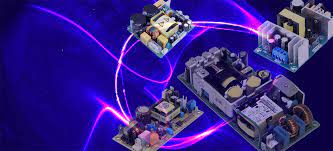Blog Credit: Trupti Thakur
Image Courtesy: Google
Introduction to Switching Modes
Data transmission and error checking on transmitted and received frames are handled by Layer 2 switches on the data connection layer. The MAC address determines how Layer 2 switches forward packets. The different packet-forwarding modes are referred to as switching modes.
Switching mode distinguishes between different parts of a frame. The numerous components that make up the frame (FCS) are a preamble, the destination MAC address, the source MAC address, the user’s data, and the Frame Check Sequence are the numerous components that make up the frame (FCS).
Switching Modes
- The layer 2 switches are used for transmitting the data on the data link layer, and it also performs error checking on transmitted and received frames.
- The layer 2 switches forward the packets with the help of MAC address.
- Different modes are used for forwarding the packets known as Switching modes.
- In switching mode, Different parts of a frame are recognized. The frame consists of several parts such as preamble, destination MAC address, source MAC address, user’s data, FCS.
There are three types of switching modes:
- Store-and-forward
- Cut-through
- Fragment-free
Store-and-forward
- Store-and-forward is a technique in which the intermediate nodes store the received frame and then check for errors before forwarding the packets to the next node.
- The layer 2 switch waits until the entire frame has received. On receiving the entire frame, switch store the frame into the switch buffer memory. This process is known as storing the frame.
- When the frame is stored, then the frame is checked for the errors. If any error found, the message is discarded otherwise the message is forwarded to the next node. This process is known as forwarding the frame.
- CRC (Cyclic Redundancy Check) technique is implemented that uses a number of bits to check for the errors on the received frame.
- The store-and-forward technique ensures a high level of security as the destination network will not be affected by the corrupted frames.
- Store-and-forward switches are highly reliable as it does not forward the collided frames.
Cut-through Switching
- Cut-through switching is a technique in which the switch forwards the packets after the destination address has been identified without waiting for the entire frame to be received.
- Once the frame is received, it checks the first six bytes of the frame following the preamble, the switch checks the destination in the switching table to determine the outgoing interface port, and forwards the frame to the destination.
- It has low latency rate as the switch does not wait for the entire frame to be received before sending the packets to the destination.
- It has no error checking technique. Therefore, the errors can be sent with or without errors to the receiver.
- A Cut-through switching technique has low wait time as it forwards the packets as soon as it identifies the destination MAC address.
- In this technique, collision is not detected, if frames have collided will also be forwarded.
Fragment-free Switching
- A Fragment-free switching is an advanced technique of the Cut-through Switching.
- A Fragment-free switching is a technique that reads atleast 64 bytes of a frame before forwarding to the next node to provide the error-free transmission.
- It combines the speed of Cut-through Switching with the error checking functionality.
- This technique checks the 64 bytes of the ethernet frame where addressing information is available.
- A collision is detected within 64 bytes of the frame, the frames which are collided will not be forwarded further.
More Precisely They can be defined as-
Types of Switching Modes
There are mainly 3 types of Switching Modes:
- Store and Forward
- Cut Through
- Fragment Free.
Store and Forward Switching
Store and forward packet switching is a telecommunications technology in which data packets are kept at each intermediate node before being transferred to the next node. Before sending, the intermediary node verifies that the packet is error-free, assuring data packet integrity. In general, the network layer functions in a store-and-forward packet switching context.
Working Principle
The node that has a packet to transmit sends it to the router, the closest node. The packet is held in the router until it has arrived in its entirety, at which point its checksum is checked for error detection. The packet is then sent to the next router when this is completed. Each router repeats the procedure until the packet arrives at its destination.
Working of Store and Forward mode Switching
The Internet Service Provider (ISP) has six routers (A to F) linked by transmission lines illustrated in blue lines in the figure above. There are two hosts connected to router A and the other to router D. Let’s say H1 wishes to transmit H2 a data packet. The packet is sent to router A via H1. The packet is held in router A until it has completed its journey. CRC (cyclic redundancy check) code is used by Router A to verify the checksum. If a CRC error occurs, the packet is rejected; otherwise, it is sent to the next hop; in this case, router F. Router F follows the same procedure and then sends the packet to router D. Finally, the packet is sent to host H2 via router D.
(Also see, message switching, circuit switching)
Cut-through Switching
Cut-through Switching is a technique of switching data frames or packets in data communications in which the switching device (bridge or switch) sends the frames or packets as soon as the destination address is accessible, rather than waiting for the rest of the data to arrive.
Working Principle
In packet switching systems, cut-through Switching is employed. Packet-switching divides a message into several components called packets, each of which is routed separately from the source to the destination. Because it is a connectionless network switching technology, there is no need to set up a dedicated communication route.
When a data frame or packet arrives at a bridge or switch using cut-through Switching, data transmission may begin as soon as the destination address field is received. The switch checks the destination address against the address table it has stored to see legitimate. If the address is fair and the outgoing connection is accessible, the switching device begins transmitting the frame to the target port immediately, even before the remainder of the frame arrives.
In this case, the switching device serves as a frame forwarder. It cannot run error checks when it begins forwarding since the whole frame is not yet accessible. For error handling, it is dependent on the target devices.
Fragment-Free Switching
Fragment-free Switching is a more sophisticated Cut-through Switching approach.
Fragment-free Switching is a technique for providing error-free transmission by reading at least 64 bytes of a frame before forwarding it to the next node.
Working Principle
It combines the speed for Cut-through Switching with the functionality of error checking. This approach examines the 64 bytes of the ethernet frame that include addressing information. If a collision is found inside the first 64 bytes of a frame, the frame will not be further transmitted.
You can read related articles such as congestion control in Computer Networks here.
Differences b/w Store-and-forward and Cut-through Switching.
Store-and-forward Switching Cut-through Switching Store-and-forward Switching is a technique that waits until the entire frame is received. Cut-through Switching is a technique that checks the first 6 bytes following the preamble to identify the destination address. It performs error checking functionality. If any error is found in the frame, the frame will be discarded otherwise forwarded to the next node. It does not perform any error checking. The frame with or without errors will be forwarded. It has high latency rate as it waits for the entire frame to be received before forwarding to the next node. It has low latency rate as it checks only six bytes of the frame to determine the destination address. It is highly reliable as it forwards only error-free packets. It is less reliable as compared to Store-and-forward technique as it forwards error prone packets as well. It has a high wait time as it waits for the entire frame to be received before taking any forwarding decisions. It has low wait time as cut-through switches do not store the whole frame or packets. Store and Forward and Cut through Mode
Store and Forward Cut Through Store-and-forward Switching is a technique that involves waiting until the entire frame has been received before advancing. Cut-through Switching is a way of determining the destination address by examining the first 6 bytes following the preamble. It has the ability to check for errors. The frame will be rejected if there is a mistake in it; else, it will be transmitted to the next node. It doesn’t even try to catch mistakes. With or without flaws, the frame will be shipped. Because it waits for the entire frame to be received before passing it on to the next node, it has a high latency rate. Because it just checks the first six bytes of the packet to determine the destination address, it has a low latency rate. This is incredibly trustworthy since it only delivers packets that are free of errors. Because it also sends error-prone packets, it is less dependable than the Store-and-forward method. Because it waits for the entire frame to to be received before proceeding, it has a significant wait time. Cut-through switches to have a low wait time since they do not preserve the complete frame or packet.

11
JulSwitching Modes
Jul 11, 2023Recent Blog
Quantum Gravity Gradiometer PathFinderApr 28, 2025
The TechKriti 2025Apr 26, 2025
India’s First Quantum Computing VillageApr 24, 2025
India’s Achievement In QKDApr 22, 2025
The V2G TechnologyApr 21, 2025




